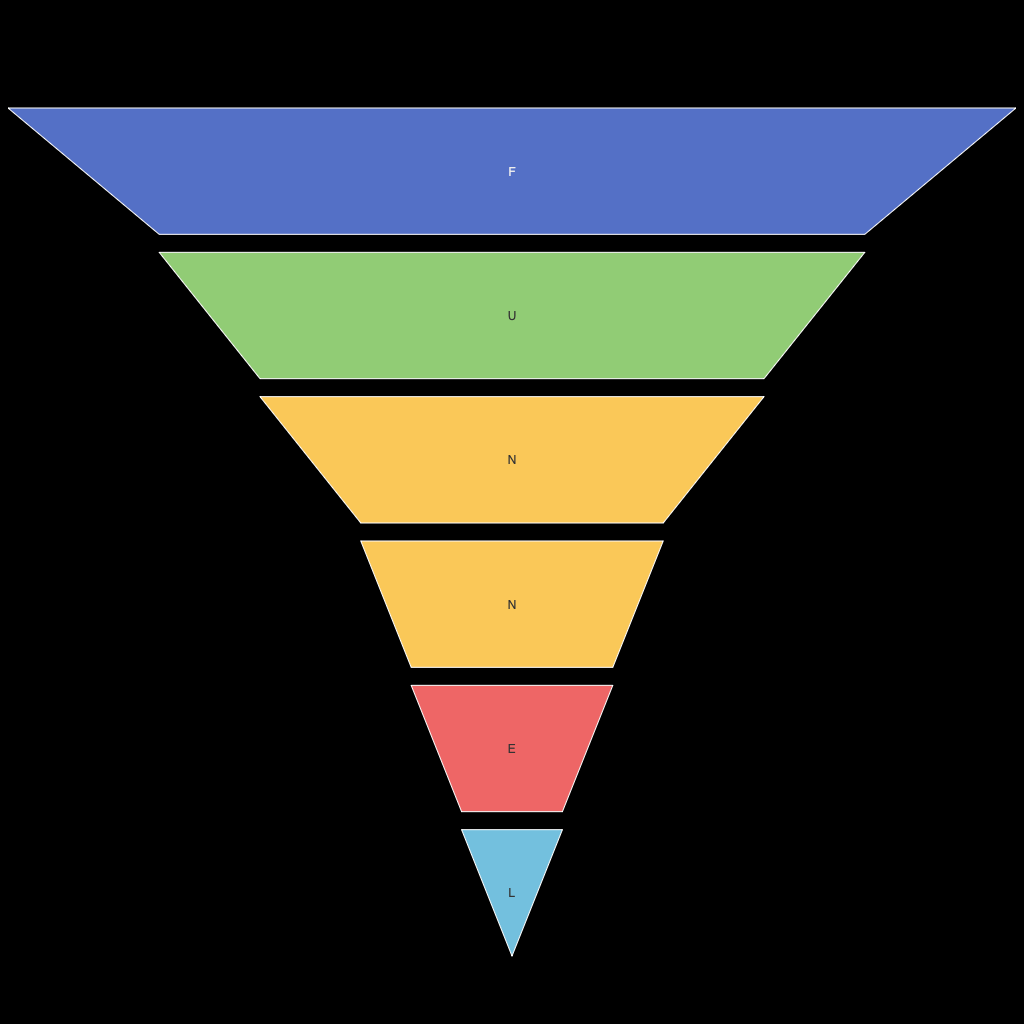Unpacking the Power of Funnel Charts: A Deep Dive into Visualization Techniques and Business Applications
Funnel charts are a popular and powerful type of data visualization that can provide businesses with valuable insights. These charts are designed to show the progression of an item through various stages of a process, making them useful for visualizing customer journey stages, sales processes, or marketing campaigns. A funnel chart graphically displays the process of transformation from large amounts to smaller amounts, which can help to identify bottlenecks or areas of potential improvement. Below is a deep dive into the power of funnel charts, including how they work, their benefits, and how they can be applied in both analysis and persuasive communication.
### How Funnel Charts Work
Funnel charts display data along three axes: the horizontal X-axis, depicting the stages (or steps) of the process; the vertical Y-axis, representing the values (quantities, numbers, or percentages) that correspond to each stage; and the area between the axes, which shows the trend of the values moving through the different stages. The name ‘funnel’ comes from the characteristic narrowing shape the chart takes, reflecting the decreasing size of data at each step.
For example, a sales funnel might start wide at the top, representing the initial number of potential customers, and narrow as you progress through stages like ‘awareness’, ‘interest’, ‘consideration’, and ‘purchase’. This visually communicates how many customers drop off or ‘exit’ at each stage of the process.
### Benefits of Funnel Charts
1. **Visualization of Processes**: Funnel charts provide a clear visual representation of sequential processes, making it easy to understand the flow and key milestones.
2. **Identification of Bottlenecks**: By visualizing the flow, businesses can identify where the majority of the drop-offs occur, which often points to areas that need improvement in terms of customer experience or efficiency.
3. **Persuasive Communication**: These charts are excellent for showing progressive development and can be persuasive when trying to convince stakeholders of critical issues, such as potential revenue loss if customer retention is not improved.
4. **Comparative Analysis**: Funnel charts can be used to compare different funnels side by side, which is useful for understanding performance across multiple programs, campaigns, or business segments.
5. **Enhancing Data Understanding**: The visual nature of funnel charts aids in better comprehension of complex processes, helping non-technical stakeholders grasp the significance of data changes.
### Business Applications
Funnel charts find extensive use across various business functions:
– **Marketing**: To analyze the effectiveness of campaigns, track the customer journey, and identify which channels maximize engagement or conversion rates.
– **Sales**: Monitoring the sales process, from initial contacts to final sales, helping in prioritizing efforts based on the stage where most customers fall out.
– **Product Development**: Identifying stages where improvements are needed in the creation process or customer interactions to prevent product abandonment or return of high-quality products.
– **Customer Service**: Understanding the customer feedback journey from pre-purchase to post-purchase, highlighting areas where customer service might need to improve to ensure smooth transitions and enhance customer satisfaction.
### Choosing the Right Funnel Chart
When using funnel charts for analytics, it is crucial to select data accurately, label stages clearly, and ensure that the data is granular enough to distinguish meaningful trends. The use of consistent color schemes and size variations can help highlight critical insights. Additionally, combining funnel charts with other types of charts and using interactive elements when possible can further enhance the utility of the visualization.
In conclusion, funnel charts are more than just a graphical tool for displaying data; they are a strategic asset that can empower businesses to optimize processes, improve customer experiences, and drive informed decisions. By leveraging the unique capabilities of funnel charts, organizations can uncover valuable insights, support key business objectives, and gain competitive advantages.
